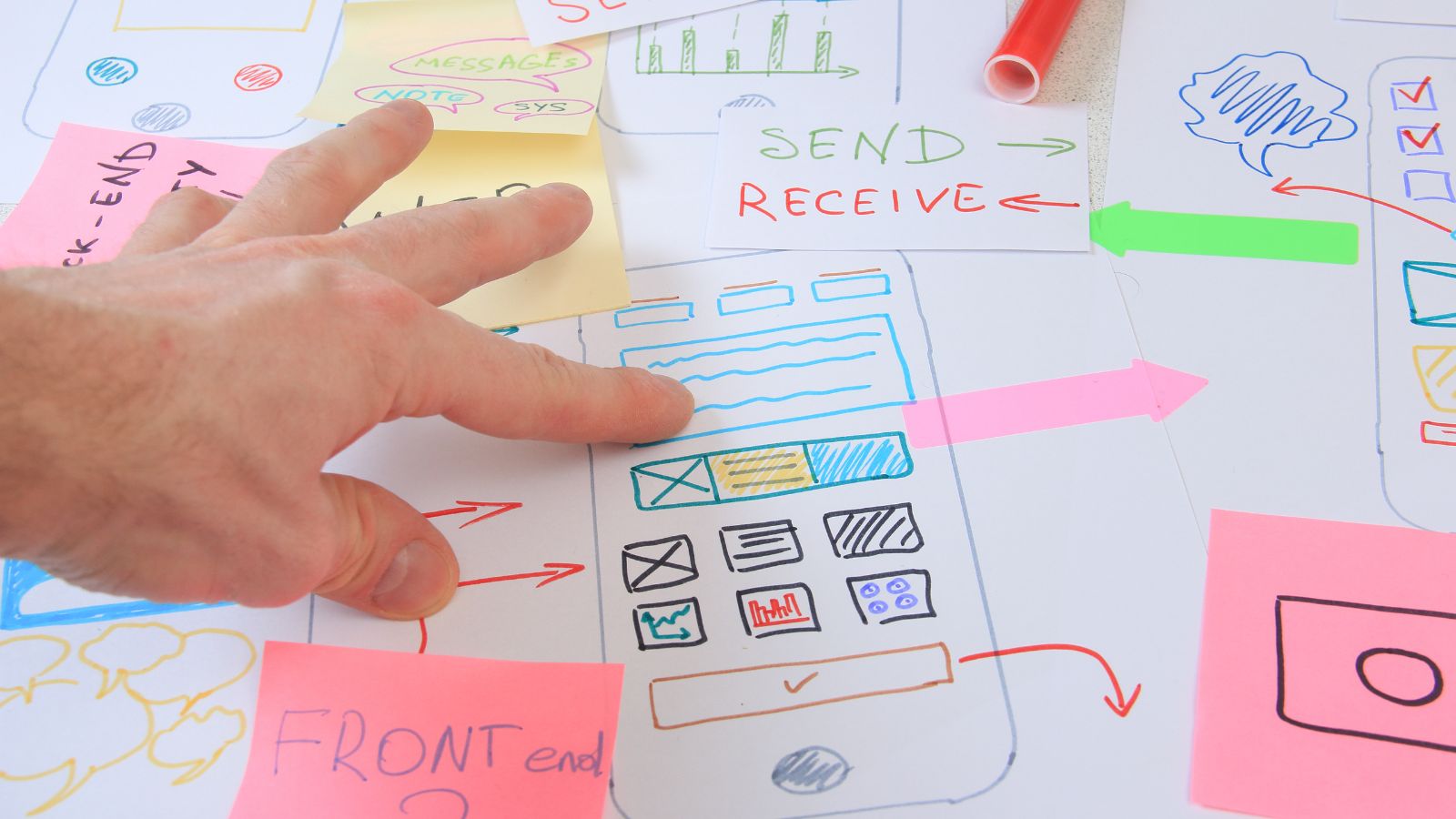Let’s work together to build something amazing. Share your project details and our team will reply to figure out the next steps to your success.

In today’s digital economy, optimizing user experience (UX) is no longer optional—it’s essential for the success of startups. This article explores the impact of UX by delving into the story of Target, whose focus on usability, accessibility, and design resulted in a $1 billion increase in online revenue within just six months. With the increasing importance of UX as a critical competitive advantage, forward-thinking CEOs are investing heavily in creating world-class user experiences. The article emphasizes the psychological principles behind good UX, such as cognitive fluency, emotion, motivation, and habit formation, which can create a magical feeling of flow that keeps customers coming back. By investing in UX makeovers, startups can drive massive growth by reimagining their digital interfaces and aligning them with customer needs and expectations.

The Impact of User Experience (UX)
In 2015, e-commerce giant Target launched a redesign of their mobile app and website, optimizing the user experience for their digital customers. The results were staggering: within six months, Target saw a $1 billion increase in online revenue, a 40% jump in conversion rates, and a 10% lift in customer satisfaction scores. By overhauling their digital experience with a focus on usability, accessibility, and design, Target unlocked enormous growth and value.
Target’s story highlights the immense business impact that user experience (UX) can drive. When customers have a seamless, intuitive experience on a digital platform, it directly translates to higher conversions, more repeat customers, larger order values, and greater customer loyalty.
UX Is Important to Reach Business Goals and Gain a Competitive Edge
Forward-thinking companies invest heavily in UX, recognizing it as a critical competitive advantage. According to recent research, over 70% of CEOs believe UX is essential to their business goals and vital to differentiation. Companies like Airbnb, Uber, and Mailchimp have built world-class user experiences that fuel their growth, so much so that they have Chief Experience Officers and executives leading UX at the highest levels of the organization.
What is UX?
UX is the sum of all customer interactions with a company’s digital platforms, from navigating a website to using a mobile app to engaging on social media. When each of these micro-interactions is designed with the user in mind, it creates an overall experience that feels seamless, cohesive, and compelling. The result is a magical feeling of flow that keeps customers coming back. Target’s $1 billion success story is a testament to the power of UX to drive real business results. For today’s startups and companies, investing in user experience is no longer optional—it’s essential.
Why UX is Now a CEO Priority
Forward-thinking CEOs recognize that user experience is a critical competitive advantage and driver of business success. According to recent research, over two-thirds of CEOs believe the customer experience is one of the top priorities for their companies. Nearly 60% of CEOs aim to compete primarily based on customer experience.
UX is a Pivotal Shift
This is a pivotal shift. CEOs have traditionally focused on revenue, profits, and shareholder value metrics. But in today’s digital world, the customer experience is deeply intertwined with these traditional business metrics. By investing in user experience, CEOs can positively impact key performance indicators like customer lifetime value, retention rates, and revenue growth.
UX C-Level Leadership Roles
Major companies across industries have created C-level leadership roles focused on the customer experience, like Chief Experience Officers or Heads of Customer Experience. For example, in 2016, United Airlines appointed a Chief Customer Officer to oversee customer experience across the organization. Sephora, Nestle, and LEGO have also appointed heads of customer experience in recent years.
Today’s CEOs must recognize that user experience is vital to business success in an era where customers have more choices and higher expectations than ever before. While profits and shareholder value will always remain priorities, CEOs must pay attention to the human experiences that underlie their key metrics and drive real business impact. By making UX a top strategic priority, CEOs can future-proof their organizations and gain a competitive edge.
The Psychology of User Experience: Why Good UX Feels Like Magic
Our interactions with digital products tap into deep psychological processes determining whether we find an experience engaging or frustrating. Good UX leverages key psychological principles to motivate users and convert them into happy customers.
Cognitive Fluency
Cognitive fluency is one of the essential principles, which refers to thinking about how easy or difficult something is. When an interface is fluent, it feels intuitive and seamless. We don’t have to exert much mental effort to use it. This fluency puts us in a positive mindset and makes us more receptive to the product. Confusing, cluttered interfaces have the opposite effect.
Emotion
Emotion is another crucial driver of user experience. Well-designed experiences trigger positive emotions like enjoyment, excitement, or delight. Positive emotions also encourage users to recommend the product.
User Motivation
User motivation is essential to UX. Users will find it highly engaging if an experience taps into key reasons like the need to achieve, explore, and connect with others. Social networks are designed to motivate us for social interaction and relationships. Experiences should be optimized to sustain motivation.
Habit Formation
Finally, habit formation is one of the most powerful psychological effects of UX. When an experience becomes habitual, it forms an automatic trigger-action response. Users don’t even think about using the product, they do it out of habit and instinct. The more a product is operated out of practice, the less likely users are to stop using it. UX should leverage principles of habit formation like one-click triggers, variable rewards, and progress indicators.
Digital experiences feel like “magic” when they tap into the psychology of cognition, emotion, motivation, and habit. Startups that understand these psychological principles will be able to craft engaging user experiences that fuel growth. Those that ignore them will struggle to build an experience that resonates. For any company today, psychology-driven design is the key to success.
Conversion Rate Optimization: How to Boost Revenue with Micro-Interactions
Micro-interactions refer to the small details in an interface, like button hovers, form field focus states, and loading animations. While micro-interactions seem insignificant in isolation, optimizing them can outsize conversion rates and revenue. According to research, simplifying checkout processes and forms can increase conversions by up to 400%.
Orbitz & Shop.com
For example, travel site Orbitz optimized their checkout flow by removing unnecessary form fields, using auto-complete for addresses, and streamlining the booking path. These micro-changes led to a 35% increase in mobile bookings. E-commerce company SHOP.COM saw a 251% lift in revenue from redesigning their product pages that featured larger images, simplified options, and prominent calls to action.
Micro-Interactions
Micro-interactions matter because they shape the overall user experience. Confusing or frustrating micro-interactions, like ambiguous form fields or clumsy navigation, create friction that causes users to abandon their journey. Smooth, intuitive micro-interactions have the opposite effect, guiding users seamlessly through your site or app. When done well, micro-interactions feel almost invisible—but their impact is substantial.
Key Strategies for Micro-Interactions
Some key strategies for optimizing micro-interactions include:
- Simplify forms and minimize the number of fields. Only ask for essential information. Use auto-complete and drop-down options whenever possible.
- Streamline your checkout and booking flows. Remove any unnecessary steps or pages. Ensure the path from browsing to buying is as short as possible.
- Pay attention to details like button sizes, hovers, and loading states. Buttons should be prominently placed and easy to click. Hovers and loading animations should provide clear feedback to the user.
- Test different options to determine the optimal design. Use A/B testing to compare the impact of micro-interaction variations on your conversion rates. Let data drive your design decisions.
- Time page load speed and minimize lag. Even minor delays of just a few seconds can hurt conversions. Optimize your site performance to provide a seamless user experience.
- Review error messaging and provide helpful feedback. Error messages with ambiguous or technical language confuse users and damage their experience. Provide clear error feedback and guidance to get them back on track.
Optimizing micro-interactions is an ongoing process of refinement and improvement. But by simplifying user flows, streamlining form fields, and perfecting small interface details, you can turn micro-frustrations into micro-delights—and see significant boosts to your bottom line. Focusing on the little things can lead to huge rewards.
Why UX Testing is a Must for Startups
For startups, user experience testing is essential to success. UX testing helps startups validate ideas, optimize user experiences, and gain valuable insights into customer needs. With limited resources and small teams, startups can’t afford to build products that don’t resonate with users.
User Interviews
There are several effective UX testing methods for startups. User interviews involve meeting target users and walking through an existing experience or prototype. This helps startups identify pain points and opportunities for improvement. Usability testing observes real users interacting with a product to spot friction and confusion. Recording user sessions allows startups to pinpoint specific issues in the experience.
A/B Testing
A/B testing compares two versions of an experience to see which performs better. This helps startups optimize critical metrics like conversion rates, retention, and revenue. For example, an e-commerce startup could test two versions of a product page to see which leads to more purchases. The data from A/B testing then inform decisions on which designs and experiences to keep and improve.
Case Studies
Case studies show how UX testing fuels startup growth. The mobile shopping app Spring conducted user interviews and surveys to understand their target teen audience better. They found teens wanted social shopping features to connect with friends. By building a feed where teens could share photos of purchases and like and comment on each other’s style, Spring’s user base grew by over 400% in one year.
UX testing should be built into the product development cycle from day one for startups. Testing early concepts and prototypes helps startups build experiences users genuinely want and need. Testing also provides data and insights to support critical design decisions. While it may require an upfront investment of resources, UX testing pays off through higher user satisfaction, increased retention, and accelerated growth. For startups, a great user experience is the foundation for success.
UX Makeovers: How Redesigns Drive Massive Growth
Experience makeovers fuel some of the business’s most dramatic growth stories. By revamping their digital interfaces and optimizing the user experience, companies can reconnect with customers and unlock new levels of engagement and revenue.
Threadless – Case Study
Take the e-commerce company Threadless, for example. In 2010, the startup stagnated. Their t-shirt design platform and storefront had primarily been the same for years. To reignite growth, Threadless launched a massive UX redesign. They decluttered their website, streamlined the submission and voting process for new t-shirt designs, and created a more curated shopping experience. The impact was huge: revenue jumped 50% year over year, and designer submissions skyrocketed.
Charity: Water – Case Study
Another example is the nonprofit Charity: Water. In 2015, they redesigned their website to make learning about their mission easier, browsing projects and donating. The new minimal, mobile-friendly design featured compelling photos and stories of people needing clean water. In the first year post-redesign, Charity: Water increased its number of donors by 100,000 and raised $3 million more in donations.
The Benefits of UX for Startups
For big and small companies, UX makeovers are opportunities to win customer attention and boost engagement. By modernizing your digital interfaces and reimagining the UX experience, you can:
- Streamline confusing experiences and bring clarity to your brand message.
- Optimize conversion funnels to make it easier for customers to take action.
- Refresh your visuals and content to resonate more deeply with customers.
- Improve page load speeds and make your experience more mobile-friendly.
- Realign your expertise with current customer needs and expectations.
Are You Ready to Take Your Startup to the Next Level With UX?
UX makeovers require time and resources, but the potential rewards are massive. Even established companies with dated digital experiences can unlock new growth by redesigning for modern users. Every business needs a refresh to keep their experience fast, intuitive, and compelling. Conducting UX research, auditing your experience, and redesigning essential customer journeys can drive the evolution and innovation needed to skyrocket your startup’s growth. The companies that commit to continuous improvement of their user experience are the ones that build lasting customer relationships and stand the test of time.
Get the latest news and updates from Aleph One in your inbox.



